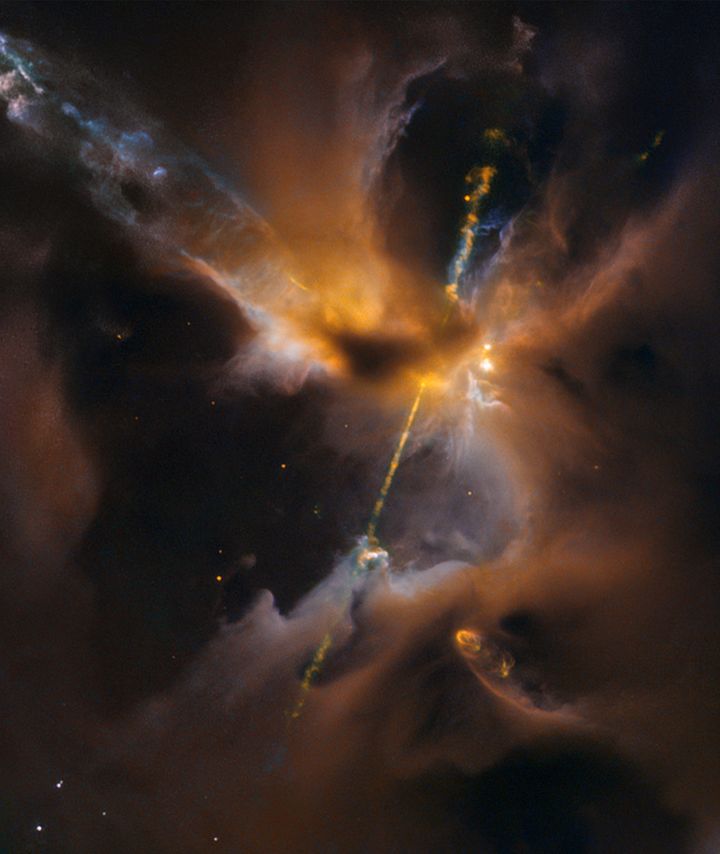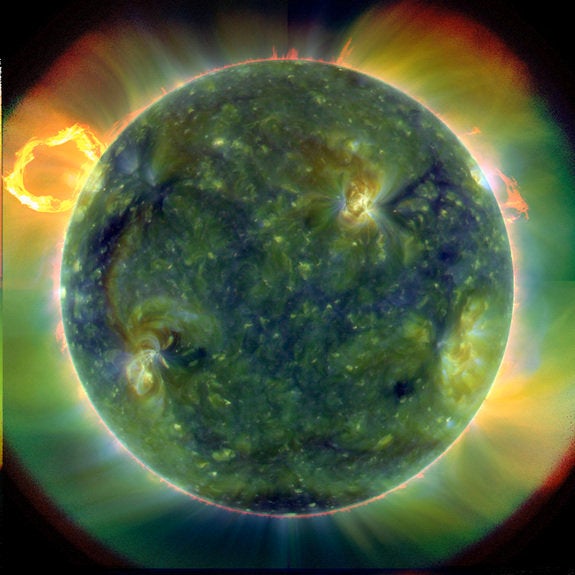How does one bring down a fully armed and operational battle station?
Maybe try a celestial, double-bladed lightsaber.

NASA's Hubble Space Telescope spotted the "lightsaber" above inside a star birthing ground known as the Orion B molecular cloud complex a mere 1,350 light-years away from Earth -- right here in the Milky Way galaxy. The space agency released a photo of the phenomenon Thursday, just in time for the release of the new "Star Wars" film.
“Science fiction has been an inspiration to generations of scientists and engineers, and the film series Star Wars is no exception,” John Grunsfeld, an astronaut and associate administrator for the NASA Science Mission Directorate, said in a statement. “There is no stronger case for the motivational power of real science than the discoveries that come from the Hubble Space Telescope as it unravels the mysteries of the universe."
Unfortunately for the Rebel Alliance, it's unclear if the twin jets of energy could be harnessed for the purposes of bringing down the Death Star. Unlike a lightsaber, which derives its deadly force from a contained crystal-powered laser, the matter emitted from the nascent star would probably be too hot to handle.
When stars form within giant clouds of cool molecular hydrogen, some of the surrounding material collapses under gravity to form a rotating, flattened disk encircling the newborn star. Superheated material spills away and is shot outward from the star in opposite directions along an uncluttered escape route — the star’s rotation axis.
Shock fronts develop along the jets and heat the surrounding gas to thousands of degrees Fahrenheit. The jets collide with the surrounding gas and dust and clear vast spaces, like a stream of water plowing into a hill of sand. The shock fronts form tangled, knotted clumps of nebulosity and are collectively known as Herbig-Haro (HH) objects.
The twin jets that make up this particular "lightsaber" are known as HH 24.
Also on HuffPost:

